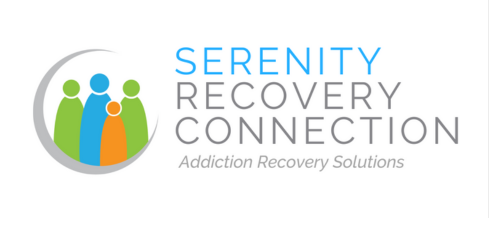Barriers to Medicated Assisted Treatment (MAT)
Barriers to Medicated Assisted Treatment (MAT)
By, Julia Brownfield, MPHE
Director of Programs Springs Recovery Connection
Even though research has shown the effectiveness of medically assisted treatment (MAT) for people suffering from substance use disorder (SUD), there are policy and procedure gaps that have subsequently led to low adoption, especially among treatment facilities across the U.S. (2). According to a recent study, only 23% of all government-owned facilities offer FDA-approved and physician prescribed MAT medications to treat SUD patients (3). Another separate study showed that only 37% of
publicly funded SUD treatment facilities administer at least one type of MAT medication in their treatment programs (2). Further, those publicly funded facilities were more likely to be situated and the treatments administered in a healthcare setting (2). In addition to that, recent data shows that while private facilities may have a slightly higher rate of MAT adoption in SUD treatment, only less than half report incorporating MAT (3).
SUD stigma is considered one of the most rampant forms of stigmas in the U.S, and its implications extend beyond those in recovery themselves. Stigma is normally directed towards both physicians who administer MAT and patients who receive the treatment. In a recent study on 997 participants, a third of them refused to be attended by a physician administering MAT to treat opioid used disorder (2). However, this barrier is primarily attributed to poor information and resources on MAT’s effectiveness as an evidence-based practice in treating patients with SUD. For instance, in the same study, another one-third of the participants believed that MAT was simply an act of substituting one addiction for another. At the same time, another 40% concluded that the medication administered under MAT is somewhat effective’ (2). Further, 25% of the sample surveyed strongly believed that physicians should have the right to refuse or refrain from administering MAT treatments (Knudsen, Abraham & Oser, 2011).
Stigma creates a barrier to MAT access in several ways. A stigma is usually a reaction to violations of social norms characterized by punishment through social isolation (4). As a result, providers are less willing to offer MAT, and even much fewer people with SUD show interest in MAT treatments. The mental health implications of stigma are particularly adverse among people with SUD, an aspect that further discourages or inhibits access to MAT treatments (4). From the professional point of view, MAT
treatment modalities lack the theoretical models concerning opioid addiction and treatment (4). As a result, patients on methadone are not recognized as medical patients in clinical settings. The lack of professional consensus contributes to additional stigma from the scientific community. This action has adverse policy implications, particularly regarding issues of funding such as insurance coverage of MAT. Until MAT is widely accepted in the medical profession as an evidenced-based practice in SUD
treatment, other forms of barriers will remain. Different ways stigma may affect access to MAT include withdrawal of treatment in jails, denial of government benefits, denial of job opportunities, denial of housing, and expressions of contempt (4).
It is imperative to note that the ideological underpinnings that inform the stigma against MAT are the premised moral belief that compulsion over drugs is a personal choice (4). Other myths include the idea that MAT is merely substituting one addiction for another and not solving the problem of addiction itself
(4).
One of the general reasons for the low adoption of MAT is a conflict with other treatment modalities and ideologies. One example is the 12-Step program, a treatment modality developed over 80 years ago Barriers to Medicated Assisted Treatment (MAT) and formed the basis of every SUD treatment regardless of its low success rate. Religious institutions mainly prefer the program due to the insistence on abstinence from any form of substances. Treatment ideologies such as the 12-Step program are less likely to adopt MAT treatment modalities (2). However, low acceptance by other existing recovery programs, such as the 12-step program, can be better
explained by the lack of resources for administering MAT treatments. In a recent study, several MAT non-adopting programs were surveyed to understand the range and
weight of all possible barriers limiting adoption. The study revealed that government regulation requires a physician to administer medication as the most significant barrier to adopting MAT; such programs lack qualified medical personnel to administer the drug or do the diagnostics test. Estimates show that 53% of counties in the U.S. lack access to a MAT-certified physician. In addition to that,the other significant barrier involves limitations in funding for MAT medications coupled with the fact that most SUD patients cannot afford the drugs (1). The lack of professional consensus has consequently led to policy and funding issues that exacerbate the problem of the cost of treatment. The most cited barrier to MAT adoption and access is misinformation among medical practitioners and consumers on MAT evidence-based practices and their effectiveness in SUD treatment (1). The misconceptions around MAT and SUD can largely be attributed to cultural factors and extreme
The first process of addressing MAT-related stigma and increasing access to MAT services is by addressing misconceptions and myths surrounding SUD and a medical condition and MAT treatment modalities (1). Plus, Peer-to-Peer education and resource referral can be a great asset in helping to combat and demystify attitudes toward it (at a community and state level), including stigma reduction campaigns, education about addiction as a brain disease, and scientific evidence on the effectiveness of
MAT services among people suffering from SUD (1). Widening public knowledge of SUD and MAT is critical in reducing stigma.
References
1-Caudillo, M. (2021). Overcoming Barriers to Medication Assisted Treatment (MAT) for Substance and Opioid Use Disorder (SUD/OUD):
Resources and Strategies. THE UNIVERSITY OF ARIZONA MEL & ENID ZUCKERMAN COLLEGE OF PUBLIC
HEALTH. https://crh.arizona.edu/sites/default/files/pdf/publications/substance-abuse/20211025-
Brief%20on%20Gaps%20for%20MAT.pdf
2-Knudsen, H. K., Abraham, A. J., & Oser, C. B. (2011). Barriers to the implementation of medication-assisted treatment for substance use
disorders: The importance of funding policies and medical infrastructure. Evaluation and program planning, 34(4), 375-381.
3-PEW Research. (2017, February 1). The case for medication-assisted treatment. The Pew Charitable
Trusts. https://www.pewtrusts.org/en/research-and-analysis/fact-sheets/2017/02/the-case-for-medication-assisted-treatment
4-White, W. L. (2009). Long-term strategies to reduce the stigma attached to addiction, treatment, and recovery within the City of Philadelphia
(with particular reference to medication-assisted treatment/recovery). Philadelphia: Department of behavioral health and mental
retardation services

